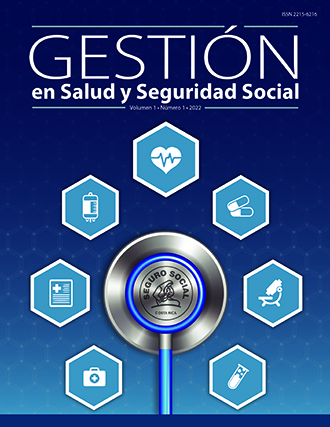Publicado 2022-11-19
Palabras clave
- Bacteriófagos; terapia de fagos; infecciones bacterianas.
Cómo citar
Resumen
La creciente prevalencia y extensa diseminación de bacterias patógenas multirresistentes a antibióticos alrededor del mundo, sumado al escaso desarrollo de nuevos antibióticos a partir de la década de los 70, requiere de la creación de nuevas estrategias para controlar infecciones bacterianas. Dentro de las terapias alternativas se encuentra el uso de bacteriófagos, entidades que más abundan en el medio ambiente, en costas, ecosistemas terrestres y en cuerpo de animales y plantas. El estudio de los bacteriófagos ha retomado interés por su eficiencia y seguridad en su uso para el control de infecciones bacterianas. En la presente revisión se detallan antecedentes históricos que llevaron al descubrimiento y desarrollo de esta alternativa; asimismo, se explican sus mecanismos de acción y, por último, se detalla el estado del arte.
Referencias
2. Golkar Z, Bagasra O, Pace D. Bacteriophage therapy: a potencial solution for the antibiotic resistance crisis. J Infect Dev Ctries. 2014; 8(2):129-136.
3. Wittebole X, De Roock S, Opal S. A historical overview of bacteriophage therapy as an alternative to antibiotics for the treatment of bacterial pathogens. Virulence. 2014; 5(1): 226-235.
4. Ackermann H. Bacteriophage electron microscopy. Adv Virus Res. 2012; 82(1): 1-32.
5. Hanlon G. Bacteriophages: an appraisal of their role in the treatment of bacterial infections. Int J Antimicrob Ag. 2007; 30(2):18-128.
6. Fischetti V. Bacteriophage lysins as effective antibacterials. Curr Opin Microbiol. 2008; 11(5): 393-400.
7. Hermoso J, García J, García P. Taking aim on bacterial pathogen: from phage therapy to enzybiotics. Curr Opin Microbiol. 2007; 10(5): 461-472.
8. Lu T, Koeris M. The next generation of bacteriophage therapy. Curr Opin Microbiol. 2011; 14(5): 524-531.
9. Hyman P, Abedon S. Bacteriophage host range and bacterial resistance. Adv Appl Microbiol. 2010; 70(10): 217-248.
10. Szczepankowska A. Role of CRISPR/cas system in the development of bacteriophage resistance. Adv Virus Res. 2012; 82(1): 289-338.
11. Kutateladze M, Adamia R. Bacteriophages as potential new therapeutics to replace or supplement antibiotics. Trends Biotechnol. 2010; 28(12): 591-595.
12. Sarker S, McCallin S, Barreto C, Berger B, Pittet A, Sultana S, Krause L, Huq S, Bibiloni R, Bruttin A, Reuteler G, Bruessow H. Oral T4- like phage cocktail application to healthy adult volunteers from Bangladesh. Virology. 2012; 434(2): 222-232.
13. Miedzybrodzki R, Borysowski J, Weber-Dabrowska B, Fortuna W, Letkiewicz S, Szufnarowski K, Pawelczyk Z, Rogoz P, Klak M, Wojtasik E, Gorski A. Clinical aspects of phagetherapy. Adv Virus Res. 2012; 83(1): 73-121.
14. Wright A, Hawkins C, Anggard E, Harper D. A controlled clinical trial of a therapeutic bacteriophage preparation in chronic otitis due to antibiotic-resistant Pseudomonas aeruginosa; a preliminary report of efficacy. Clin Otolaryngol. 2009; 34(4): 349-357.
15. Rhoads D, Wolcott R, Kuskowski M, Wolcott B, Ward L, Sulakvelidze A. Bacteriophage therapy of venous leg ulcers in humans: results of a phase I safety trial. J Wound Care. 2009; 18(6): 237-240.

